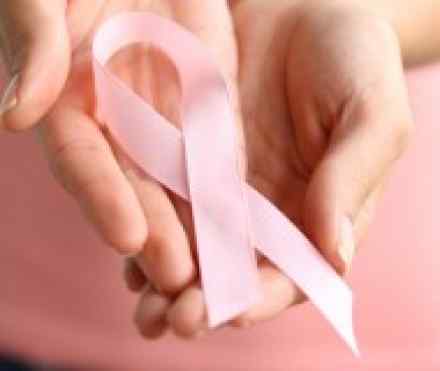
What is it?
Recurrent breast cancer is cancer that comes back following initial treatment. Although treatment is aimed at eliminating all cancer cells, a few may survive. These undetected cancer cells multiply, becoming recurrent breast cancer.
Recurrent breast cancer may occur months or years after your initial treatment. The cancer may come back in the same place as the original tumour, known as local recurrence, or it may spread to other areas, typically your bones, liver or lungs.
Learning you have recurrent breast cancer may be harder than dealing with the initial diagnosis. But recurrent breast cancer is far from hopeless. Treatment may eliminate locally recurrent breast cancer. Even if a cure isn't possible, treatment may control the disease.
Symptoms
Signs and symptoms of recurrent breast cancer vary depending on where the cancer comes back. It may show up as a lump in the breast, thickening of the surgical scar or lump on the chest wall near where your original cancer was. It may be detected in an abnormal finding on a mammogram of the breast where you had a lump removed (lumpectomy), or show up in a distant place in your body such as a bone, your liver or your lungs.
Local recurrence
In a local recurrence, cancer reappears in the same area as your original, or "primary," tumour. This could be in the remaining breast in women who have had a lumpectomy, or it may be in the chest wall or skin in women who have had a mastectomy.
Signs and symptoms of local recurrence within the same breast may include:
- A new lump in your breast or irregular area of firmness
- A new thickening in your breast area
- A new pulling back of the skin at the lumpectomy site
- Skin inflammation or area of redness
- Flattening or indentation of your nipple or other nipple changes
Signs and symptoms of local recurrence on the chest wall after a mastectomy may include:
- One or more painless nodules on or under the skin of your chest wall
- A new area of thickening along or near the mastectomy scar
Regional recurrence
A regional breast cancer recurrence means the cancer has come back in the lymph nodes in your armpit or collarbone area. Signs and symptoms of regional recurrence may include:
- A lump or swelling in the lymph nodes under your arm, in the groove above your collarbone or around your breastbone
- Swelling of your arm
- Persistent pain in your arm and shoulder
- Increasing loss of sensation in your arm and hand
- Persistent chest pain
- Difficulty swallowing
Distant (metastatic) recurrence
A distant or metastatic recurrence means the cancer has traveled to distant parts of the body, most commonly the bones, liver and lungs. The signs and symptoms may include:
- Bone pain
- Persistent, dry cough
- Difficulty breathing
- Shortness of breath
- Chest pain
- Loss of appetite
- Abdominal tenderness or discomfort
- Persistent nausea, vomiting or weight loss
- Jaundice
- Severe headaches
- Visual disturbances
- Seizures, numbness or imbalance
Causes
Recurrent breast cancer develops from cells that originally came from the primary breast tumour. The cancer returns after the initial treatment and a period of time when no cancer was detected. This can happen because treatment did not fully destroy or remove all the cancer cells. Even with surgery, small clusters of cancer cells may have been left behind that were too small to be detected with any test.
If the cancer is aggressive, isolated cells may survive the rounds of chemotherapy and radiation meant to stop recurrence. Occasionally, cancer cells may be resistant to these treatments or develop the ability to spread (metastasize).
Sometimes a single cancer cell may be dormant for years without causing harm. Then something happens that activates the cell, so it grows and makes other cells. Not all of the growth factors for cancer have been found.
It's also possible to develop a new tumour, called a second or new primary tumour, in the same breast as the first tumor or in the other (contralateral) breast. Doctors make a distinction between recurrent breast cancer and a second primary cancer in the breast. Women who have had breast cancer are at higher risk of cancer in the other breast, when compared with women who've never had breast cancer. The risk is higher if you have a strong genetic predisposition or hereditary breast cancer. Fortunately, the vast majority of women who have cancer in one breast never develop cancer in the opposite breast.
Risk factors
For breast cancer survivors, factors that increase the risk of a recurrence include:
- Lymph node involvement. Finding cancer in nearby lymph nodes at the time of your original diagnosis increases your risk of the cancer coming back. Women with many affected lymph nodes have a higher risk.
- Larger tumour size. Women with a large tumour face a higher risk. Women who have very large tumors (more than 5 centimeters, or about 2 inches) — especially if lymph nodes are involved — have a very high risk of the cancer recurring in the same area. These women should talk with their doctor about the role of radiation therapy, even if they undergo a mastectomy.
- Positive or close tumour margins. When you have an operation to remove a breast lump, the surgeon tries to remove the cancerous lump along with a healthy margin of normal tissue. If the borders of the removed tumour are free of cancer when examined under a microscope, that's considered a negative margin. If the edge of the tumour has cancer cells (positive margin), or the margin between the tumour and normal tissue is close, the risk of breast cancer recurrence is increased.
- Lack of radiation treatment following lumpectomy. Women who choose to preserve the breast by undergoing a lumpectomy (also known as "wide local excision") should undergo radiation treatments to the remaining breast to decrease the chance of a local recurrence. Research shows that lumpectomy followed by radiation works equally well as removal of the entire breast (mastectomy).
- Younger age. Women under age 60 — particularly those under age 35 — at the time of their original breast cancer diagnosis, face a higher risk of recurrent breast cancer.
- Inflammatory breast cancer. Women with inflammatory breast cancer face a higher risk of local recurrence, so their treatment typically involves mastectomy along with radiation to the chest wall.
In recent years, genetic tests designed to predict the risk of breast cancer recurrence have become available. These tests (MammaPrint, Oncotype DX) measure activity in up to 70 genes associated with breast cancer, a process known as gene expression profiling. The results are used to estimate the chance that a woman's cancer will come back. But so far these tests have a very limited role and are applicable only for women with estrogen receptor positive tumours that don't show any sign of spread to the lymph nodes. The tests have been used to plan treatment for primary breast cancer in a very small minority of women. More research is needed to determine whether these genetic tests might prove useful on a broader scale.
Diagnosis
If your doctor suspects recurrent breast cancer based on results of a mammogram or physical exam, or because of signs and symptoms, you'll likely need further imaging tests and a biopsy.
The following tests may be used to help diagnose recurrent breast cancer:
- Breast ultrasound. Ultrasound uses sound waves to produce images of the inside of the body. For women who've had lumpectomy, breast ultrasound may be used to evaluate an abnormality seen on a mammogram or found during a physical exam of your breast.
- Magnetic resonance imaging (MRI). MRI uses a magnet and radio waves to make images of the inside of your body. MRI may be able to detect abnormal areas within the breast, chest wall, lymph node areas, and blood vessels and nerves around the breast and armpit. The MRI by itself can't tell the difference between cancer and a benign process, but it can help your doctor determine the best areas for a biopsy or further testing. Not all women with a local recurrence benefit from having an MRI. Discuss your specific situation with your doctor.
- Computerized tomography (CT). A CT scan is a type of computerized X-ray that provides more-detailed pictures than do ordinary X-rays. CT scans of your chest, abdomen, pelvis, bones and head can help look for evidence of cancer that's spread to your internal mammary lymph nodes or to distant sites, such as the bones, lung or liver.
- X-rays. Chest X-rays may detect a recurrence in your lungs, while bone X-rays may be able to detect cancer in your bones.
- Bone scan. A bone scan can provide an image of your whole skeleton and may detect cancer recurrence in your bones. During a bone scan, a small, safe amount of radioactive material (tracer) is injected into your bloodstream. The tracer binds to your bone cells. Areas with cancer absorb more of the tracer and "light up" on the scan.
- Positron emission tomography (PET). A PET scan also uses radioactive material injected into your body to produce an image. Tumours often absorb greater amounts of the material and show up more prominently on the scan. A PET scan or hybrid PET/CT scan of your whole body may be used to look for areas of cancer recurrence.
Biopsy
A biopsy — a small sample of tissue removed for analysis in the laboratory — is needed to confirm the diagnosis of recurrent breast cancer. The tissue specimen will be tested for the presence of oestrogen and progesterone receptors. A breast cancer that makes receptors for the female hormones estrogen and progesterone (hormone receptor positive cancer) can be treated with hormone therapy. The hormone receptor status of your cancer may change with a recurrence.
The tissue is also tested for extra amounts of the HER2 protein, which some breast cancers overproduce. Cancers that are HER2 positive can be treated with biotherapies that target this protein.
Blood tests
A complete blood count and liver function tests can help evaluate how your body is doing and may help guide future treatments. Doctors often use blood tests that measure breast cancer tumour markers to follow the course of cancer. But tumour markers aren't specific for a cancer recurrence. These tests aren't recommended for looking for a recurrence, as they aren't always reliable.
References
http://www.webmd.com/breast-cancer/guide/breast-cancer-recurrence
http://www.mayoclinic.org/diseases-conditions/recurrent-breast-cancer/basics/definition/con-20032432
http://my.clevelandclinic.org/health/diseases_conditions/hic_Breast_Cancer_An_Overview/hic_The_Cleveland_Clinic_Breast_Program_Why_Were_Different/hic_Breast_Cancer_Recurrence
http://www.breastcancer.org/symptoms/types/recur_metast


